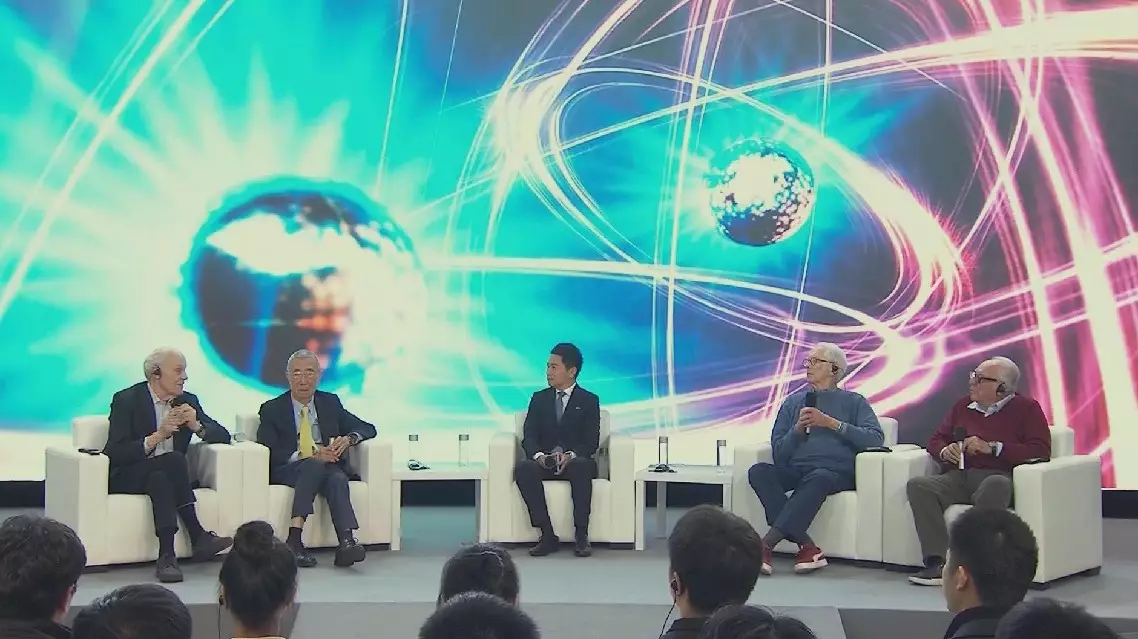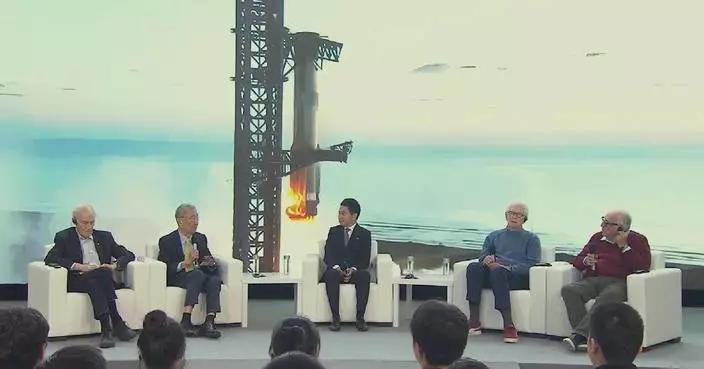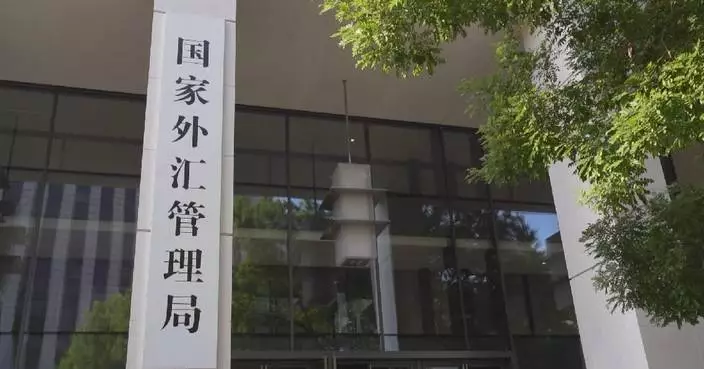The Dongfeng landing site in north China's Inner Mongolia Autonomous Region has prepared well for the return of the Shenzhou-18 astronauts with various advanced equipment and technologies, according to the Jiuquan Satellite Launch Center.
The return capsule of the Shenzhou-18 manned spaceship, carrying three astronauts, is scheduled to touch down on Earth in the early morning on Nov. 4.
The landing marks the second occasion that the Dongfeng landing site receives astronauts during nighttime conditions. To enhance safety, efficiency and reliability for this search and rescue mission, various systems at the landing site have undergone innovation, with significant upgrades made to both hardware and software.
The landing site observation team is performing final inspections and adjustments on several small unmanned optical measurement and control devices set up at the site.
Acquiring clear and stable image data in a timely manner is crucial for the swift search and rescue of astronauts before the return capsule's landing, and the Shenzhou-18 spacecraft's return to the Dongfeng landing site during nighttime presents a significant challenge for the optical equipment.
"Given that Shenzhou-18 will return at night, we have prioritized the use of infrared thermal imagers for capturing images. To ensure the highest image quality possible, we have conducted technical research on infrared image processing, yielding good results. In addition, we have employed in-depth learning technology to enhance our target recognition methods, significantly boosting the stability and reliability of target tracking," said Lu Shengwang, a member of the Shenzhou-18 landing site survey team.
Searching for and locating targets at night is more challenging than during the day, and ground teams face greater difficulties in reaching the landing site amid darkness. The Gobi Desert's uneven terrain, dust and debris stirred up by vehicles, as well as fallen tree branches and barbed wire that can cause tire blowouts, constitute significant challenges to the ground teams' search efforts.
To ensure a safe and efficient search and rescue operation, the ground team's vehicles have received upgrades to their lighting systems. New equipment, including warning lights to maintain safe distances between vehicles, has been installed to enhance the safety, efficiency and reliability of the ground search.
"This is the lighting equipment we set up at the landing site. We have installed four 400-kilowatt square lights on it. The pole can be elevated to 10 meters, ensuring that the area is illuminated as brightly as during the day. We also have a complementary lighting source, allowing us to perform various tasks with ease," said Sun Liwen, leader of the search and rescue team of the Jiuquan Satellite Launch Center.
The Dongfeng landing site has successfully carried out six search and rescue missions for Shenzhou spacecraft. For the Shenzhou-18 mission, the landing site has upgraded its communication equipment, refined contingency plans, and conducted multiple rounds of specialized night training and coordinated drills.
"Our integrated communication vehicle has undergone upgrades to its satellite antenna system and the command and dispatch vehicle has been thoroughly optimized to ensure that image transmission is now more stable and efficient," said Wang Guoliang, communications operator of the space search and rescue team of the Jiuquan Satellite Launch Center.
The three Shenzhou-18 astronauts, Ye Guangfu, Li Cong and Li Guangsu, were sent into space on April 25. So far, the crew members have completed all preparations before leaving the Tiangong Space Station.
China launched the Shenzhou-19 crewed spaceship on Wednesday, sending three astronauts to its orbiting space station for a six-month mission.
The Shenzhou-19 and Shenzhou-18 crew members met in the Tiangong space station, starting a new round of in-orbit crew handover.

China's Dongfeng landing site prepared for Shenzhou-18 astronauts return
Four renowned physicists have highlighted the profound impact of artificial intelligence (AI) on advancing scientific research, while also cautioning that AI lacks the innovative capacity to generate groundbreaking theories or concepts.
The 2024 Nobel Prize in Physics went to two computer scientists, John J. Hopfield and Geoffrey E. Hinton, for their foundational discoveries and inventions that enable machine learning with artificial neural networks.
In response to the impact of this year's Nobel Prize on future physics research, David Jonathan Gross, the 2004 Nobel Laureate in Physics, highlighted John Hopfield's physics-based invention of associative memory, emphasizing its broad scientific influence and its role in shaping modern AI.
"In my opinion, it was one of the great examples of invention actually, using ideas that came from physics, which has had an enormous impact on all of the other sciences; neuroscience, biology as well as computer science. It was given to John Hopfield, who was a colleague of mine at Princeton when I was in Princeton, a first rate condensed matter theorist who got interested in how the brain works and using ideas that came from condensed matter physics, spin glasses. He came up with a very brilliant idea, how you would construct out of these spins, or analogs of spins, an associative of memory. The other half of the Nobel Prize was shared by someone who came from computer science, who perfected parts of those applications and now dominates one of the foundational aspects that led to machine learning, large language models, AI. All this came from physics. So this is very common in physics," said Gross.
Sheldon Glashow, the 1979 Nobel Laureate in Physics, said that the Nobel Prize awarded for advancements in AI aligns perfectly with Alfred Nobel's vision of rewarding developments that contribute most to human welfare, even more so than the discovery of gravitational waves.
"All one needs to do to understand this Nobel Prize is to read Nobel's will, because the prize is to be given by the idea or the development that contributes most to human welfare. However much I support the Nobel prize that was given for the discovery of gravitational waves, the discovery and development of artificial intelligence will have much, much greater effect on human welfare than gravitational waves. So, I think this was an excellent Nobel Prize," said Glashow.
While acknowledging AI's significant contribution to scientific progress, particularly as highlighted by Gross's emphasis on Hopfield's physics-based invention of associative memory, other two scientists cautioned against overestimating AI's capabilities.
Luciano Maiani, known for his prediction of the charm quark with other two scientists, said he agrees with David's views on this year's Nobel Prize. However, he then mentioned that he once faced skepticism when proposing the Large Hadron Collider (LHC) to search for the charm quark, as some Americans believed that with advanced computer programs, experiments were unnecessary. Maiani dismissed this notion as ridiculous.
"We will never be able to tell a priori if the result will be yes or no. Does charm exist? Well, it's a matter of nature, not a matter of artificial intelligence. Artificial intelligence can only collect what we know at present. But there is an unknown part of the story, and that is nature. if you don't have an experiment, you will never know," said Maiani, who is also the former director-general of the European Organization for Nuclear Research (CERN).
Moreover, Samuel Chao Chung Ting, a Chinese-American physicist who won the Nobel Prize in 1976 for discovering a new particle, cautioned that while AI is vital, it lacks the innovative capacity to conceive of fundamental breakthroughs like four-dimensional space, quantum mechanics, or relativity.
"AI is certainly important, but it lacks true creativity. It won't conceptualize four-dimensional space, quantum mechanics, or theory of relativity. These innovative ideas are beyond its capabilities," he said.
Samuel Ting is a world-renowned Chinese-American physicist. He received the Nobel Prize in 1976 for his pioneering work in the discovery of a new particle.

Prominent physicists praise AI's transformative role in science, while warn of creative limitations










